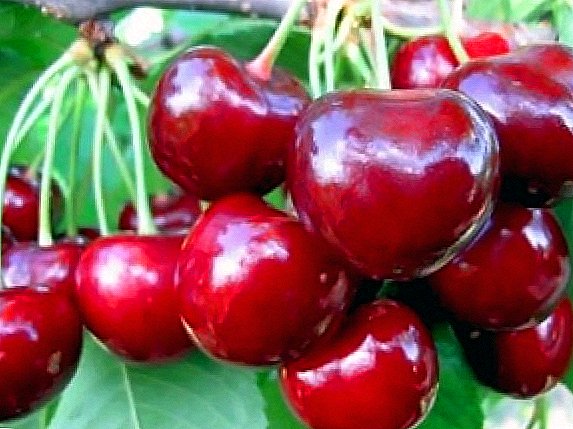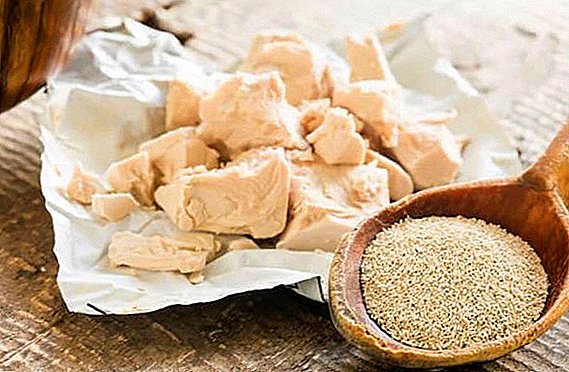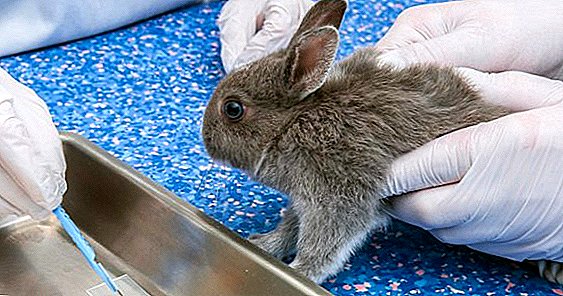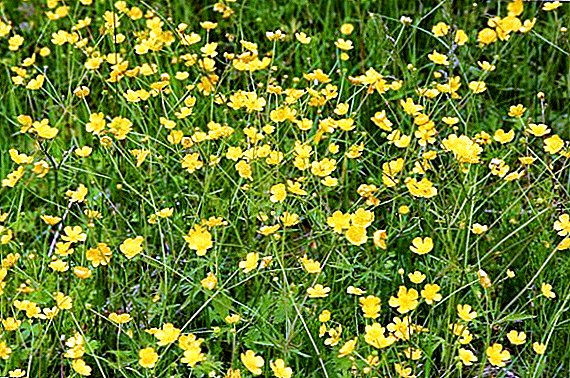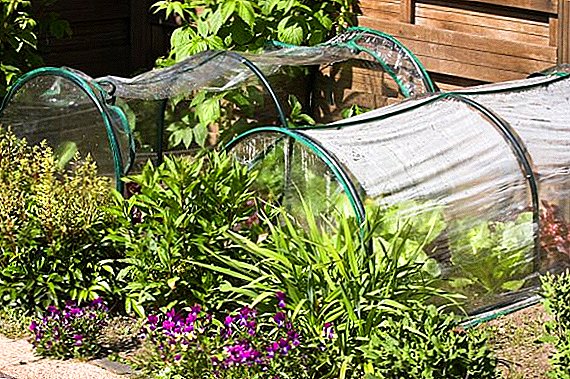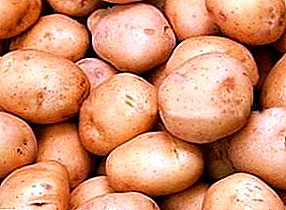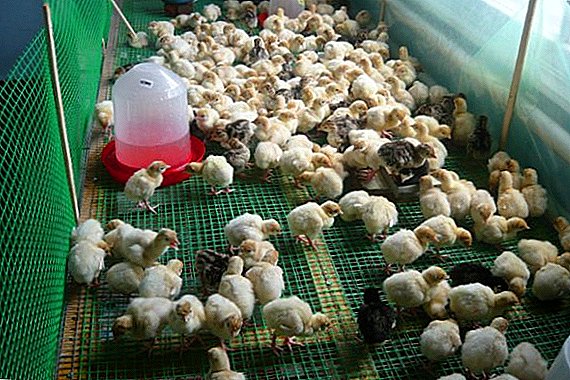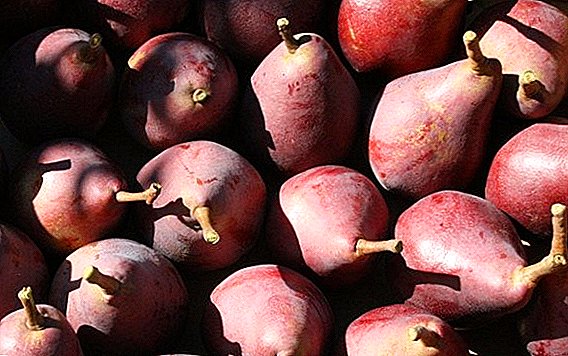 Pears are one of the most familiar and favorite fruits in our diet. This is due to the fact that they are very useful and available, unlike many overseas fruits. The variety of varieties of this fruit tree just admires and leads to some confusion due to the fact that it is difficult to decide which one to give preference and plant in his garden. After all, you see, I want the plant to be decorative, unpretentious in care, and also bring a stable harvest of tasty and healthy fruits. Pear "Starkrimson" corresponds to all these criteria. According to the description, this variety harmoniously combines the beautiful appearance of the tree, the beauty, the taste and the benefits of the fruit.
Pears are one of the most familiar and favorite fruits in our diet. This is due to the fact that they are very useful and available, unlike many overseas fruits. The variety of varieties of this fruit tree just admires and leads to some confusion due to the fact that it is difficult to decide which one to give preference and plant in his garden. After all, you see, I want the plant to be decorative, unpretentious in care, and also bring a stable harvest of tasty and healthy fruits. Pear "Starkrimson" corresponds to all these criteria. According to the description, this variety harmoniously combines the beautiful appearance of the tree, the beauty, the taste and the benefits of the fruit.
Selection
The homeland of this pear is the United States of America. As a result of the painstaking breeding work of American scientists by cloning the variety "Klappa's Lovers", the "Starkrimson" variety has turned out, which looks much more attractive thanks to its red fruits.
You can also plant other pears on your plot: "Petrovskaya", "In memory of Zhegalov", "Thumbelina", "Century", "Rossoshanskaya dessert", "Krasulya", "Lyubimitsa Yakovleva".

Tree description
Trees are quite high, their average height is 4-5 m. They are endowed with a sprawling, dense pyramidal crown, consisting of green leaves, often with burgundy hue. Flowering "Starkrimson" - mid-later.
Did you know? Pear wood is considered very durable and valuable. Musical instruments, furniture, kitchen utensils, as well as rulers for architects are made of it. All these things do not spoil for a long time and do not wear out.

Fruit Description
Pear weight varies from 190 to 200 g, but there are also larger fruits that reach 300 g. Their shape is classical pear-shaped. Ripe fruits are colored red, and not ripe - in yellow. For a grade the white soft pulp which, without exaggeration, thaws in a mouth is characteristic. Gastronomic qualities of pears are quite high - it has a sweet-sour taste and a pronounced pleasant aroma.
Pear, like other fruit trees, can be grafted in different ways, types and at different times (in spring and summer). As a stock gardeners often use varieties such as "Severyanka", "Tenderness", "Ussuriyskaya".
Pollination
Unfortunately, the tree itself is not pollinated, you need to choose the right neighbors in the garden. The best pollinators are Bere Bosc, Williams, Panna, Dessert, Olivier de Serres and Conference.

Fruiting
When the tree starts to produce crops, it depends on the stock. If quinces are used, the first fruits will ripen in 4-5 years after planting. If a pear tree is used as a stock, then the first harvest should be expected no earlier than after 7 years.
Gestation period
The fruits ripen in mid-July - early August, this period varies depending on the climatic conditions in which the plant grows.
Important! Experienced gardeners recommend harvesting 10-14 days before full maturity.
When collecting pears, they first tear off the fruit from the lower branches, and then gradually move to the top.

Yield
After 7-10 years after planting, the pear begins to bear fruit well, but the maximum yield, up to 35 kg from one tree, comes only after the plant is 12-15 years old. In adulthood, "Starkrimson" abundantly and stably fruits.
Transportability and storage
Fruits are poorly stored and do not tolerate transportation. The maximum keeping quality of 30 days can be achieved only if the pears are picked immature. Ripe fruits are stored a maximum of a week.
Important! In order to extend the shelf life of pears, from can be placed in boxes with dry oak sawdust and put in a cool place.

Disease and Pest Resistance
Variety "Starkrimson" resistant to common ailment that affects fruit crops - scab.
One of the common pests that affect these fruit trees is the pear gall mite, which is dangerous for the plant throughout the growing season. In order to avoid its appearance, it is necessary to fertilize in time to increase the osmotic pressure of cell sap in the foliage.
It is important to detect the pest in time, since it is much easier to deal with it when this tick has just appeared and has not yet spread to the whole plant. To get rid of the parasite, use a variety of chemicals, they are used to prepare solutions for spraying.
Drought tolerance
These fruit trees are considered very unpretentious, including they quietly tolerate dry weather. Therefore, if it is not possible to carry out regular watering, the tree will not suffer, and if there is such an opportunity, it will thank you generously for the water procedures, for example, with an even greater harvest.

Winter hardiness
Winter and moderate frosts plant tolerates well. In early spring, before the buds awaken, it is recommended to prune dried and frozen twigs.
Fruit use
Juicy ripe pears are very good fresh. They are also used for making compotes and jams, only for these purposes it is desirable to harvest a little earlier than the ripening period, in the phase when the pear has not turned red.
Read also about the methods and recipes for harvesting pears for the winter.
Large beautiful fruits can be a wonderful table decoration and complement any exquisite dessert. Unfortunately, this variety is not suitable for drying.

Did you know? Pears are very helpful. In addition to the high content of vitamins and trace elements, their regular presence in the diet helps to organize the work of the digestive system and clean the intestines. Doctors recommend eating these fruits in between meals.
Advantages and disadvantages
Like any other plant, Starkrimson pears have their advantages and disadvantages.
pros
- Delicious, healthy and beautiful fruits.
- High winter hardiness and drought resistance.
- Unpretentiousness of the plant and ease of planting and care.
- Decorative quality of the tree.
- Abundant and stable fruiting.
- Resistance to diseases.
Minuses
- Tall tree
- Pears are poorly stored and carry transportation.
- Overripe fruits are showered.
- The tree begins to bear fruit at least 4 years after planting.

Variety "Starkrimson" has proven itself and enjoys well-deserved popularity. Gardeners around the world appreciated the beauty and gastronomic qualities of the fruit, as well as the decorativeness of the tree itself. Cultivation of this fruit tree does not require special knowledge and preparation - even a novice can plant it on its plot.


